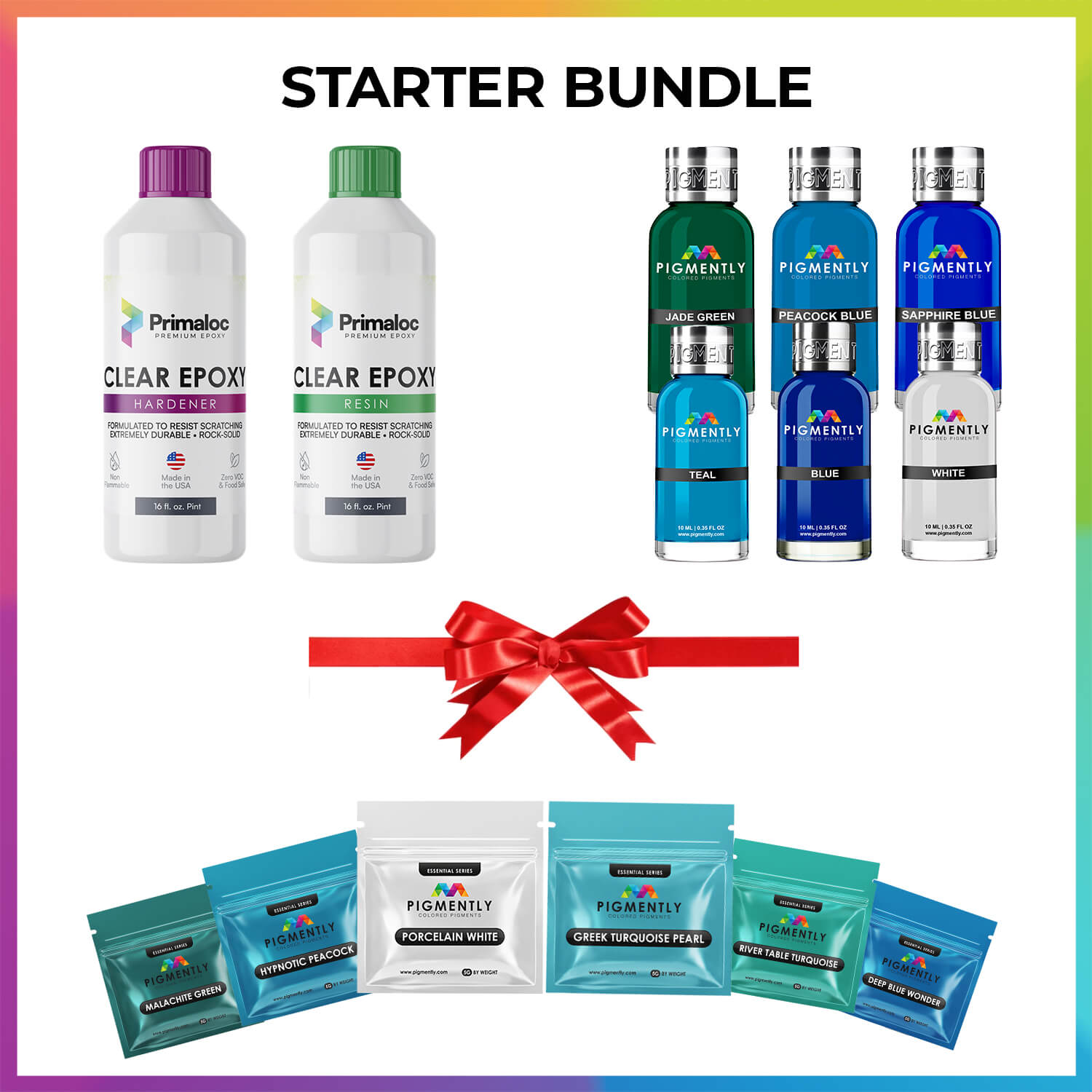Working with mica powder can be incredibly fun. There are so many ways to take advantage of its unique characteristics—its marked shine, its insoluble and vibrant colors—that the primary consideration is about what you can mix it.
In this article, we'll be covering some of the various mediums that mix well with mica powder. But first, a quick summary of what mica powder is for those who are not yet familiar.
What Is Mica Powder?
Mica powder is the powdered form of mica, which is a group of 37 distinct silicate minerals known for their high reflectivity and perfect mineral cleavage.
When mica minerals are mined, cleaned, and pulverized, they become mica powder. In most of its variants, this powder serves a variety of both functional and aesthetic uses, and it is often used as a decorative pigment.
Mica powder, when used as a pigment, is able to provide long-lasting color and a beautiful, elegant sparkle to the exterior of many different mediums. Because its insoluble, it doesn't dissolve in water. Instead, the particles retain their spectacular form and are suspended within any medium they're blended into.
Mica powder is colorfast, meaning it won't lose its color or fade over time, even in the presence of sunlight. This makes it a desirable choice for not only interior decor but also exterior design as well.
In our Pigmently store, you'll find a wide array of premium mica powders, perfect for bringing soft or vivid colors to your creative projects.
To learn more about the creation of mica powder, click here!
What Do You Mix Mica Powder With?
While mica powder can be used on its own with just a mild adhesive such as Mod Podge, many find it more interesting and appealing to apply it to other mediums to imbue them with alluring visual effects and color.
Here's a partial list of mediums you can mix mica powder with:
- Epoxy Resin
- Paints—Including Acrylic Paints and Oil Paints
- Soap Bases
- Candle Wax
- Clay
- Nail Polish (typically using a polish suspension base)
Let's take a brief look at each one.
Epoxy Resin
One of the most popular uses for mica powder pigments is as a colorant for epoxy resin. Epoxy resin is a clear, high-gloss plastic that starts off as two liquid components. When mixed together these components cure, eventually hardening into a super-smooth and durable material.
Epoxy is often used as a sealant for countertops and table top, but just as common is its application in the creation of resin art.
A good art-and-craft epoxy will be highly receptive to mica powder colorants without being affected negatively by them while it cures.
Paints (Acrylic, Oil)
Mica powder can also be mixed into acrylic paints and oil paints. Since one of mica powder's primary appeals is its ability to shimmer elegantly direct lighting, it's usually desirable to choose translucent paints for your mica projects.
Mica powder can also be applied on top of wet paint after the paint as been applied to intended substrate. This allows it to remain close to the surface of the paint and is able to shimmer in the light.
Soap Bases
For soap making, accentuating the visual appeal is a big part of the process. Mica powder can be used in soap bases—whether for melt-and-pour or cold press—to bring vibrant shades of color to your works.
The amount of mica powder used for this is affected by the process of soap making you're using, so be mindful of that when using a guide to make a suitable powder blend.
To learn more about employing mica powder in your soap making, click here!
Candle Wax
Much like soap bases, melted candle wax can also have mica powder mixed in.
Generally, it's better to apply the mica powder to the exterior of the candle by dusting your candle molds with mica, sprinkling it on top of a cooled candle, or even brushing it on the candle with a diluted mica/alcohol solution.
Learn more about incorporating mica powder into your candle making by clicking here!
Clay
Mica powder can also be used with clay ceramics. For this purpose, users tend to sprinkle the powder on the wet clay prior to firing.
Nail Polish
Cosmetic products such as nail polish are also great options for mica powder. Applying mica powder to a polish suspension base will give it a beautiful, multi-toned hue that shimmers to an extent determined by which pigments you select.
Make sure you choose a suspension base suited for the pigment you choose. For instance, the particles in our Bronze Glitter mica powder may be slightly larger than those from our Pistachio Green mica powder.
Click here to learn more about how mica powder fares with cosmetics and skin contact.
Pigmently: Your Trusted Source for Premium Mica Powder for Epoxy
At Pigmently, we're committed to providing premium mica powders for DIY creators of any skill level. Each of our powder pigments is strictly produced to a refined formula.
By using only high-grade ingredients to ensure a clean, potent, and vibrant result, we're able to maintain our high standards of quality, which allows us to offer a selection of high-grade pigments that blend well with other mediums.
In our store, you'll find a wide array of premium mica powders to use in your creations. You can also view our premium liquid dyes collection.
If you find yourself interested in multiple shades, consider our curated Colorant Value Bundles, which are cost-effective ways to obtain a variety of colorful mica powder pigments.
Bring your creations to life with premium Mica Powder Pigments by Pigmently!



